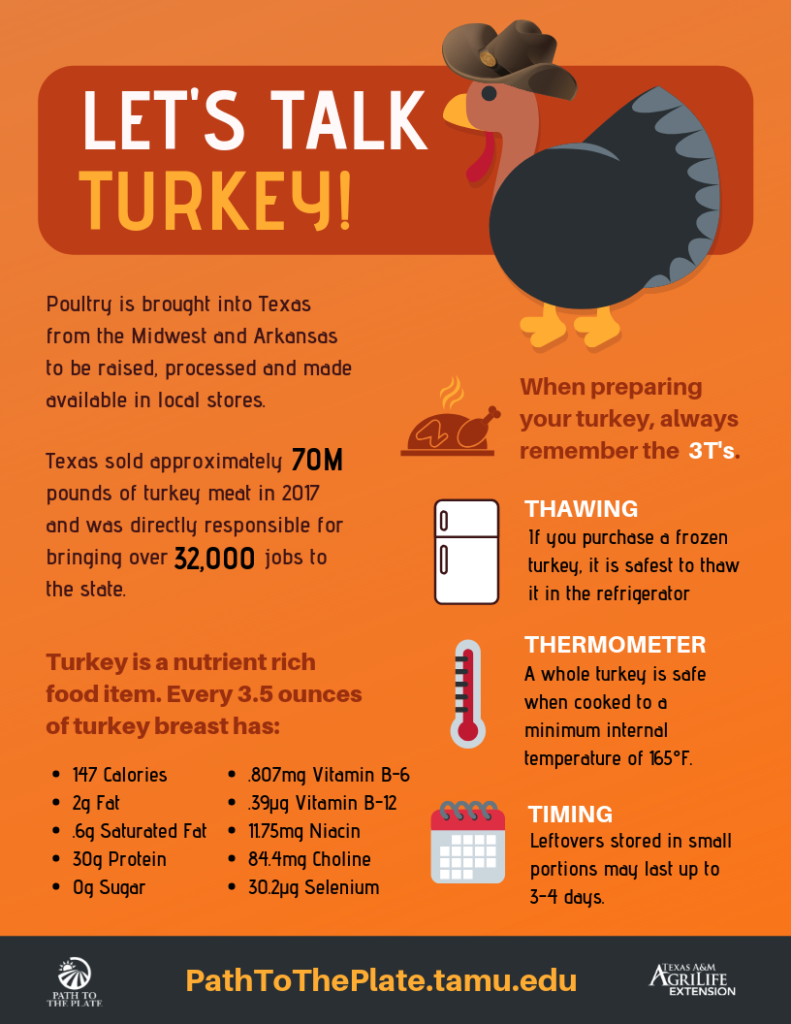Stuffing, and casseroles, and pumpkin pie, oh my! Amidst all of the yummy Thanksgiving fixings, we can’t forget about the bird that acts as the centerpiece of the holiday – turkey!
During the hustle and bustle of the upcoming holiday season, we rarely ever stop to think about where our food comes from and the path it took to get on our table. Associate Professor and Texas A&M AgriLife Extension Service Specialist for the Department of Poultry Science, Craig Coufal, says that while there are few turkeys hatched in Texas, day-old poultry are brought into the state from the Midwest and Arkansas to be raised, processed and made available in local stores. The USDA reported that Texas sold approximately 70 million pounds of turkey meat in 2017 and was directly responsible for bringing over 32,000 jobs to the state.
In addition to its delicious flavor, turkey is a nutrient rich food item. With each different cut of turkey comes unique fat and caloric content. Nutritional facts for 3.5 ounces of turkey breast are as follows:
– 147 calories
– 2g fat
– .6g saturated fat
– 30g protein
– .807mg Vitamin B-6
– .39µg Vitamin B-12
– 11.75mg Niacin
– 84.4mg Choline
– 30.2µg Selenium
More nutritional facts for the different cuts of turkey can be found on eatturkey.com
Safe handling of the turkey after purchase is also important, especially when it comes to preventing foodborne illnesses. Dan Hale, Texas A&M AgriLife Path to the Plate coordinator, says to remember the 3 “T’s” when handling turkey:
1. Thawing: If you purchase a frozen turkey, it is safest to thaw the turkey in the
refrigerator. It is important to keep the turkey below 40 °F to minimize the growth of
bacteria.
2. Thermometer: Use a thermometer to check the internal temperature of the turkey. A whole turkey is safe when cooked to a minimum internal temperature of 165°F. If you stuffed the turkey, make sure that the interior portion of the stuffing also reaches 165°F.
3. Timing: Refrigerating leftovers quickly helps to mitigate bacteria growth. Leftovers stored in small portions in covered containers may last up to 3-4 days. Frozen leftovers should be used within 2-3 months for best quality.
While turkey is often associated with the Thanksgiving holiday, it can also act as a perfect protein-packed dinner for any day of the week. AgriLife Extension Service’s Dinner Tonight offers a plethora of meal options with turkey as the main ingredient, including Slow Cooker Herb Turkey Breast, Southwest Turkey Bake, Turkey Chili Pie, and even Turkey Tacos with Cranberry Salsa! Recipes for these dishes can be found at dinnertonight.tamu.edu.


